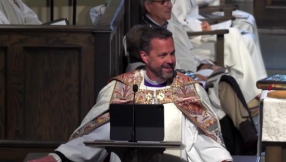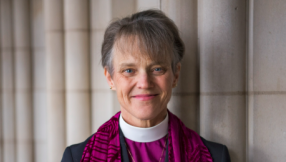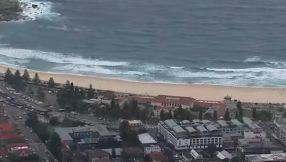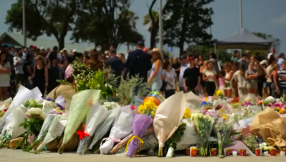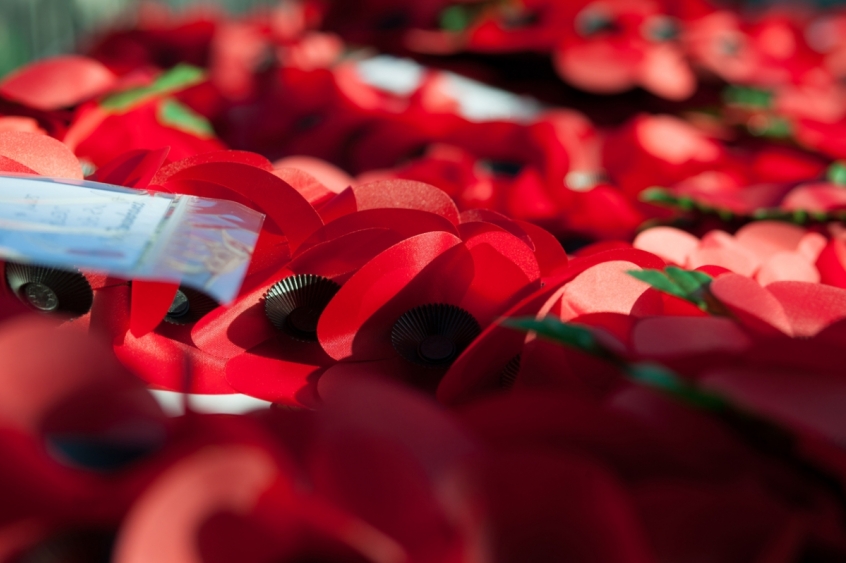
Each second Sunday in November people gather together for Remembrance Sunday. This is the story...
History of the Great War
The United Kingdom joined what was known as the Great War on 4th August 1918, as a result of the German invasion of Belgium. German atrocities in Belgium were widely reported and many people heard them from the hundreds of thousands of Belgian refugees who sought sanctuary in Britain and other countries. Many people, including some Christians, enthusiastically volunteered and felt a moral duty to fight evil.
Christians and war
As the war dragged on the initial enthusiasm for it waned. After conscription was introduced in March 1916, some people applied to be conscientious objectors, which included Christians from across the Christian traditions. The war led to a great debate amongst Christians. Some Christians supported the war through theories of just war, while other Christians were pacifists. Verses from the Bible were quoted to support both positions. Many clergymen served as chaplains, and many congregations lost so many men to the war, that they were effectively run by women.
Peace
An armistice, or cessation of hostilities, was agreed for 11th November, 1918. Famously it was at the 11th hour of the 11th day of the 11th month. On 17th November, 1918 a national Day of Thanksgiving was called. Pubs, cinemas and other places of entertainment were voluntarily closed as a mark of respect. Peace was not really celebrated until war officially ended with the signing of the Treaty of Versailles on 28th June 1919. Peace celebrations took place in towns and villages across the land in summer 1919. They often started with a united thanksgiving service, followed by great peace celebrations, often including discharged and demobilised servicemen marching in a procession.
The story of the two minute silence
The first official national Armistice Day celebration was held on 11th November 1919 with a celebration at Buckingham Palace. King George V asked that the Empire fall silent for two minutes to pause and reflect on the casualties of war. The following year, on Armistice Day 1920, the funeral of the Unknown Soldier took place at the new London Cenotaph, followed by a burial at Westminster Abbey, and another two minute silence was observed. Buses halted, electricity was cut to the tram lines, and trading on the Stock Exchange stopped. Ever since 1919, a two minute silence has been held annually.
The story of the poppy
In 1917, the National Federation of Discharged and Demobilised Sailors and Soldiers (NFDDSS) was formed for returning serviceman, who were usually injured or disabled. There were branches all over the country. In 1920, the federation invited some other veterans' associations to discuss a merger, which was achieved in 1921, establishing the Royal British Legion. After the Great War, the red poppy was one of the only plants to grow on the former battlefields of northern France and Flanders. This became known through the popular 1915 poem "In Flanders Fields," by Canadian soldier John McCrae. Its red colour was symbolic of the blood shed by many. In 1921, the poppy was adopted by the Royal British Legion as the symbol for their appeals, and has been used ever since.
War Memorials
Across the country in towns and villages, war memorials were erected, and war memorial plaques with names were put in many places of worship, and even some places of work. Many of these war memorials take the shape of a cross, to represent the ultimate sacrifice that Jesus took on the cross. Some even have the verse John 15:13 on them - "Greater love hath no man than this, that a man lay down his life for his friends" from the Authorised Version. Meanwhile many villages raised money for War Memorial Halls or Institutes, as places where demobilised servicemen could meet, and today these are the origins for many of the village halls found across the country.
Origin of Remembrance Sunday
From the 1920s, many churches started to mark the Sunday nearest Armistice Day as a Remembrance Sunday. In 1939, due to the new war, no official Armistice Day celebrations were held. Instead, it was decided to move the official national Armistice Day celebrations to the second Sunday of November being the Sunday nearest November 11th, which in any case was in line with common practice. Many of the Armistice Day ceremonies stopped during the war, but after the war ended, national remembrance services were held on 11th November 1945, which happened to be a Sunday.
The Catholic Archbishop of Westminster proposed that the second Sunday in November should be officially named Remembrance Sunday in commemoration of both World Wars. The second Sunday in November is also convenient in many churches of the liturgical tradition because it follows a season of remembrance starting with All Saints Day on 1st November. With the agreement of King George VI, this was endorsed by the Home Office in January 1946. Since then the second Sunday in November is officially Remembrance Sunday in the United Kingdom.
However, in many other countries Remembrance Day is held on 11th November, whichever day it falls on. Meanwhile in the United States of America, since 1954, it has been called Veterans Day.
Remembrance Sunday services
Each year services of remembrance are held on Remembrance Sunday, in churches and at the war memorials across the land. Those held at war memorials are often organised by the local British Legion branch working with local clergy, or are organised ecumenically. Typically a parade of uniformed organisations takes place who gather at their local war memorial, and then the 'Last Post' is played by a bugler followed by a two minute silence at 11am. Then there is a memorial service at the war memorial, often led by a local minister representing the churches, and different organisations lay memorial wreaths of poppies.
Many other people attend their local church for Remembrance Sunday, or an ecumenical united service. Some churches may hold a normal service but incorporate a two minute silence at 11am. Many churches hold services at 11am, so they typically start a little earlier on that day. Where a church has bells, these are rung half-muffled to create a sombre effect.
An annual National Service of Remembrance takes place at the Cenotaph in London. This is televised, and is attended by representatives of the political parties, religious groups and military organisations, and members of the royal family. It is a time of unity when political and religious differences are put aside.
Remembrance Sunday 2023
Remembrance Sunday 2023 will mark the 125th anniversary of the end of the First World War. It is a time when churches of all types remember those who died. For many Christians it is a balancing act. They do not want to glorify war, nor they do not want to worship the dead, but rather they seek to remember those who lost their lives, and they pray for peace.
With wars continuing across the world, it is a time to reflect that "wars and rumours of wars" (Matthew 24:6) are nothing new. We will do well to recall that Jesus was the Prince of Peace (Isaiah 9:6), who urged us to be peacemakers (Matthew 5:9) and pray for our enemies (Matthew 5:44).
Neil Rees is a publishing consultant, historian, freelance writer and speaker. He is also involved in youth work at his local village church, and guest preaching in churches of different denominations.










